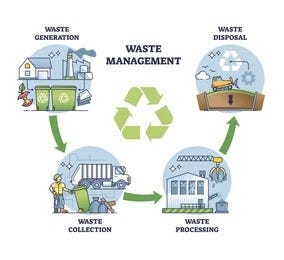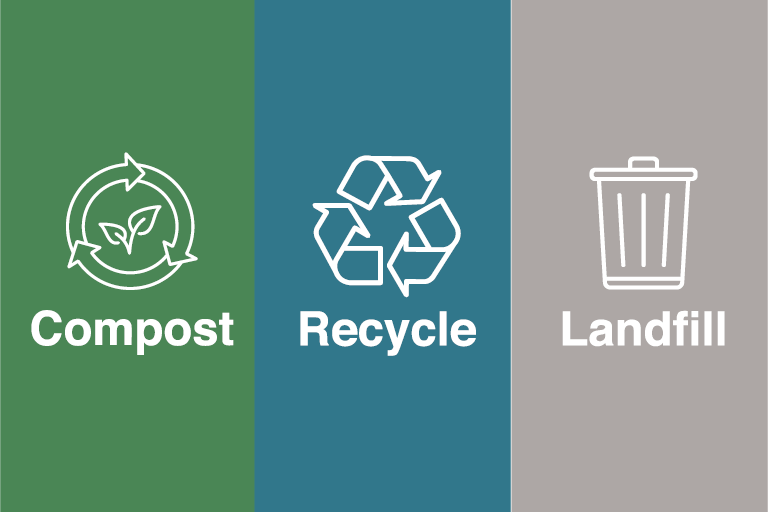The Impact of Recycling Lives Services on Communities and the Setting
The Impact of Recycling Lives Services on Communities and the Setting
Blog Article
Checking Out Different Types of Waste in Modern Waste Monitoring Solution
The contemporary landscape of waste monitoring entails browsing a complex range of waste kinds, each calling for specialized handling and disposal approaches to mitigate ecological effects. Metropolitan solid waste, unsafe waste, digital waste, and natural waste each existing distinct obstacles and possibilities for source recuperation.
Local Strong Waste
Local strong waste, typically referred to as family garbage or garbage, encompasses a variety of discarded materials produced by residential, business, and institutional sources within a municipality. This waste stream generally includes things such as product packaging, food scraps, yard trimmings, paper, plastics, fabrics, and disposed of household items. The administration of community strong waste is a crucial component of city preparation and public health and wellness, demanding reliable collection, transport, and disposal systems.
Effective waste administration systems are created to lessen environmental impact while maximizing source recuperation. Composting natural waste, such as food scraps and yard trimmings, not only minimizes landfill use but also produces valuable dirt changes.
Municipalities need to also resolve the logistical and financial difficulties linked with waste administration. Carrying out pay-as-you-throw systems, enhancing public awareness, and buying modern technology can substantially enhance waste diversion rates. By integrating these practices, towns can foster sustainable neighborhoods, lower greenhouse gas exhausts, and conserve natural deposits.
Contaminated Materials

Effective unsafe waste administration involves numerous important actions: identification, disposal, partition, and treatment. Identification requires the category of waste based on its unsafe buildings. Partition guarantees that dangerous materials are stored individually from non-hazardous waste to stop cross-contamination. Therapy approaches, such as chemical neutralization, incineration, and stabilization, are utilized to lower the toxicity, quantity, or wheelchair of the waste. Finally, disposal options, including secure land fills and underground storage, are selected to make certain long-lasting containment.
Regulatory frameworks, such as the Resource Conservation and Recuperation Act (RCRA) in the United States, give standards and requirements for contaminated materials administration. Adherence to these policies, coupled with improvements in waste therapy technologies, is vital in minimizing the threats connected with contaminated materials.
Electronic Waste
Electronic waste, frequently described as e-waste, represents a quickly expanding challenge in waste management systems worldwide. This kind of waste includes discarded electronic gadgets and devices such as smartphones, computer systems, tvs, and various other digital devices. The quick rate of technological development, paired with reducing item lifespans and customer need for the current tools, has actually exponentially boosted the volume of e-waste produced yearly.
E-waste is specifically troublesome because of its intricate make-up, often including harmful substances like cadmium, mercury, and lead, which pose considerable ecological and health and wellness dangers otherwise appropriately handled. Conversely, e-waste additionally includes useful materials such as copper, silver, and gold, which can be recuperated and recycled. The double nature of e-waste-- both harmful and valuable-- necessitates specialized handling, recycling, and disposal processes.
Reliable go right here e-waste monitoring entails stringent regulatory frameworks, robust collection systems, and progressed recycling technologies. Public awareness and engagement are crucial, as improper disposal methods, such as prohibited discarding and informal recycling, exacerbate ecological contamination and health hazards. As a result, boosting e-waste monitoring methods is essential for mitigating environmental impact and recuperating beneficial resources in a significantly electronic globe.

Organic Waste
Organic waste, comprising cooking area scraps, lawn trimmings, and farming residues, represents a significant part of the international waste stream. This kind of waste is eco-friendly, implying it can be broken down by microorganisms right into simpler organic substances. Regardless of its potential for all-natural decay, inappropriate monitoring of natural waste can bring about damaging ecological effects, consisting of the exhaust of greenhouse gases such as methane, which add to climate change.
Reliable management of natural waste is critical for minimizing these ecological influences (recycling lives services). Composting is a widely embraced approach, changing organic waste into nutrient-rich garden compost that can boost dirt wellness and farming efficiency. Furthermore, anaerobic food digestion is an emerging technology that transforms organic waste into biogas, a renewable resource source, and digestate, which can be utilized as fertilizer
Municipalities and waste monitoring entities need to carry out durable organic waste collection and treatment programs to make the most of the advantages of these procedures. Public education projects can likewise play an essential function in motivating households and organizations to separate natural waste from other sorts of waste. By prioritizing the monitoring of natural waste, societies can lower garbage dump usage, lower greenhouse gas exhausts, and produce valuable by-products for farming use.

Cutting-edge Waste Administration
In the world of waste monitoring, innovative methodologies are changing just how societies manage their refuse, intending for sustainability and efficiency. These innovations encompass a range of technologies and methods that improve reusing prices, decrease land fill reliance, and reduced ecological effect. One prominent advancement is the application of clever waste bins equipped with sensing units that monitor fill degrees and maximize collection routes. This not only decreases fuel consumption yet also reduces greenhouse gas exhausts.
One more noteworthy growth is the fostering of waste-to-energy (WtE) modern technologies. By converting non-recyclable waste right into usable power through processes such as incineration and anaerobic food digestion, WtE minimizes land fill worry and offers an eco-friendly power resource. Additionally, innovations in chemical recycling allow for the malfunction of complicated plastics into their initial monomers, allowing the development of new, why not try here top notch plastic products.
In addition, the round economic climate version is acquiring traction, highlighting the design of products and systems that focus on reusability and resource efficiency. This alternative technique encourages industries to decrease waste generation from the beginning. Via these ingenious techniques, contemporary waste monitoring systems are not only resolving the instant challenges of waste disposal however also leading link the way for an extra lasting future.
Conclusion
An extensive understanding of municipal strong waste, harmful waste, digital waste, and natural waste, paired with the implementation of cutting-edge waste monitoring remedies, is important for minimizing environmental influences. Integrating modern technologies such as smart waste bins and waste-to-energy systems can enhance effectiveness and sustainability. Reliable waste monitoring strategies not just foster resource recovery yet likewise promote public recognition and participation, eventually adding to the development of a round economic situation.
The contemporary landscape of waste administration involves navigating a complex array of waste kinds, each calling for specialized handling and disposal methods to minimize environmental effects. Local strong waste, hazardous waste, digital waste, and natural waste each existing distinct challenges and possibilities for resource healing.Digital waste, frequently referred to as e-waste, stands for a quickly expanding obstacle in waste monitoring systems worldwide. Via these ingenious techniques, modern-day waste management systems are not only dealing with the instant difficulties of waste disposal yet additionally paving the way for a more sustainable future.
An extensive understanding of metropolitan solid waste, harmful waste, electronic waste, and organic waste, paired with the application of cutting-edge waste administration services, is critical for reducing ecological effects. (recycling lives services)
Report this page